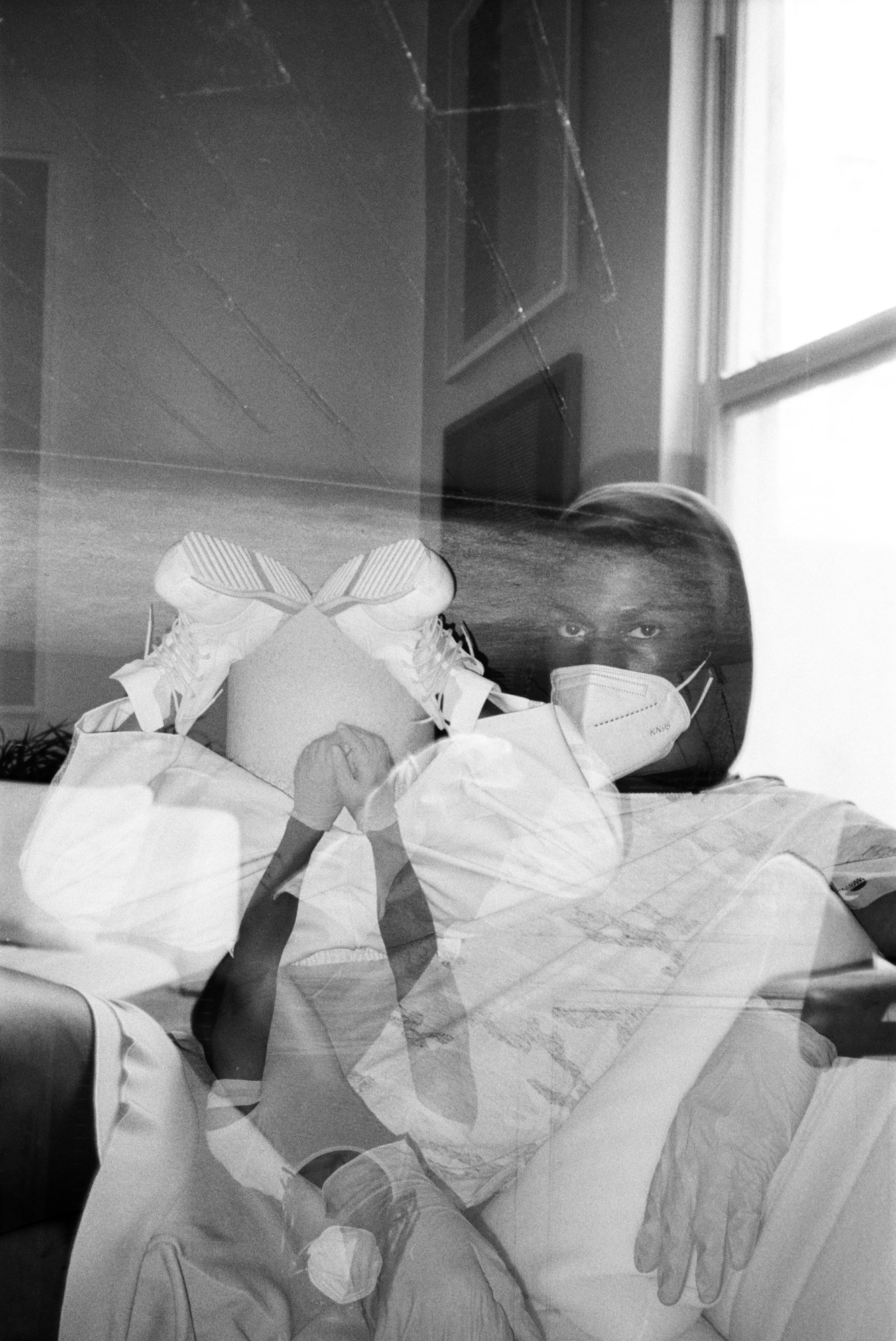This story originally appeared in i-D’s The Faith In Chaos Issue, no. 360, Summer 2020. Order your copy here.
The term ‘artifact’ is often used to refer to ancient relics; antique vases or Egyptian jewels, handmade objects of cultural significance tied to a specific time and place. Archaeologists unearth them, in varying states of disrepair, and build a story of our long history as a creative species. The same can be said for pieces of clothing, perhaps the most personal of artifacts – artifacts in which we live out our lives as well as windows into the lives of their makers, whether that’s a Raf Simons vinyl trench or a pair of Yves Saint Laurent trousers.
Dominik Halas, Hugh Mo and Max Tsiring certainly aren’t traditional archaeologists, but it is their job to excavate the internet, scrolling through various resale sites and auctions for rare designer grails. They can look at a Helmut Lang convertible scuba skirt and recognise that it’s from the SS04 collection, a collection that nodded to Helmut’s first foray into similar scuba and wetsuit pieces 10 years earlier, in 1993 and 1994, and the designer’s tendency to return to signature motifs from time to time.
It makes sense then, that Dominik, Hugh and Max are the founders and gatekeepers of Artifact New York, a fashion archive of nearly 3,000 rare designer pieces that lends garments to celebrities like Billie Eilish and Travis Scott, stylists around the world and industry insiders who are lucky enough to have the code to their password-protected website.

Max Tsiring, who was born in Ukraine and grew up on Staten Island, founded Artifact as a clothing resale business in 2014. He primarily sold vintage T-shirts to support his career as a musician, gigging around New York City, playing keys in the alt-rock band Kitten. He was about to abandon the operation altogether when he met Hugh, in what can only be described as a hypebeast meet- cute, waiting in line overnight for a denim drop at Barneys. Hugh grew up in Queens, is a self-described “shopaholic” and had already amassed a pretty large streetwear collection. They bonded instantly and the pair decided to join forces, turning Max’s resale business into a rental business, as per Mo’s suggestion.
Hugh and Max then reached out to Dominik Halas, who had also been a customer of Artifact, and had an expansive collection of his own – including a number of Hedi Slimane-era Saint Laurent and Dior Homme pieces that he’d saved up to purchase since the age of 13. Growing up in New Jersey, with strict Slovakian parents, Dominik became interested in fashion as a form of rebellion and a way to express himself. “My mom brought me home the fall 2007 New York Times Style Magazine, and that’s where I was first exposed to Hedi, who I really resonated with,” Dominik says, of how he first became interested in fashion. “After that moment, I started looking into the bands he was using for the Dior soundtracks, and all these references to literature and history in his work. I found it really fascinating and there was no other choice for me. I had to pursue fashion.”
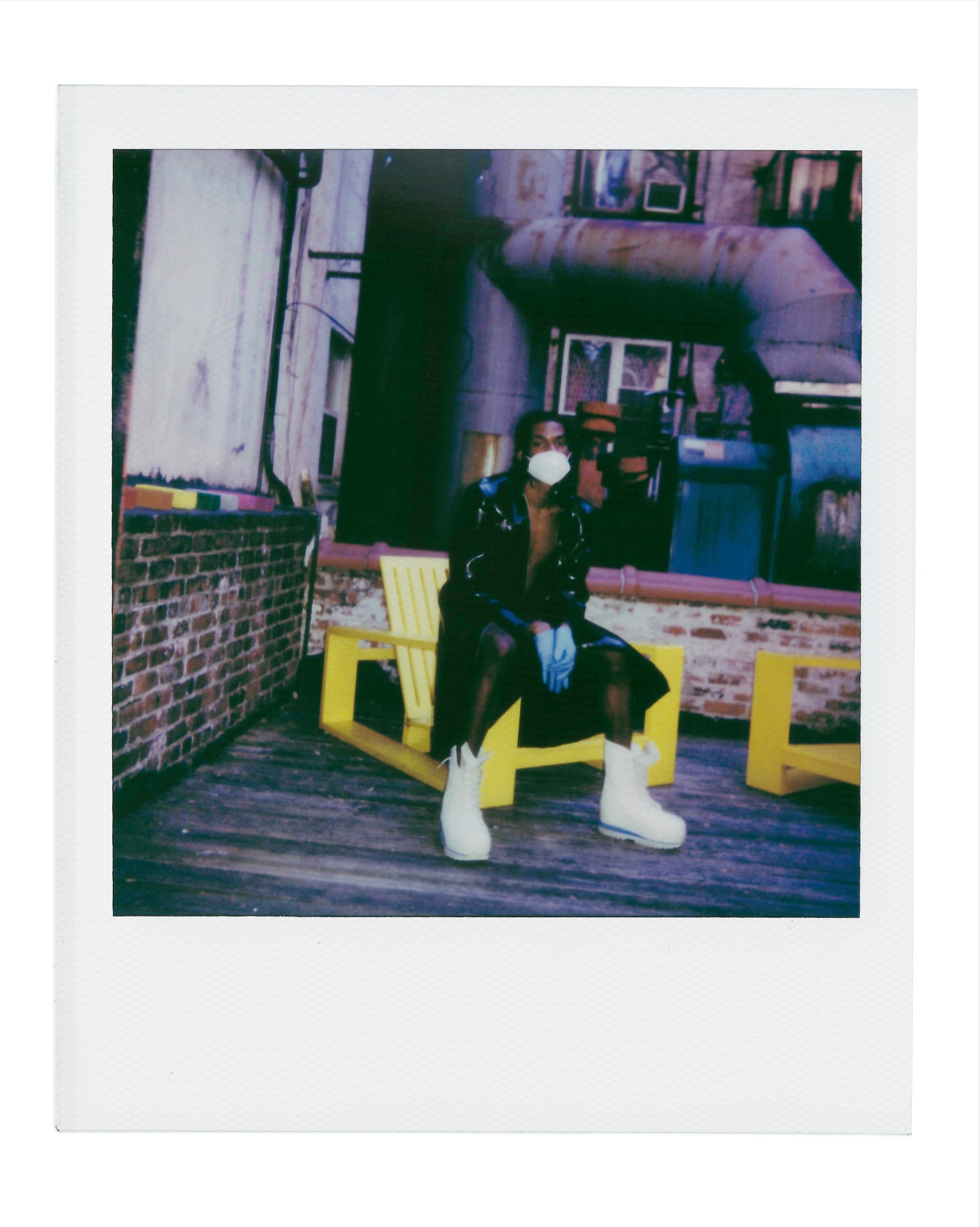
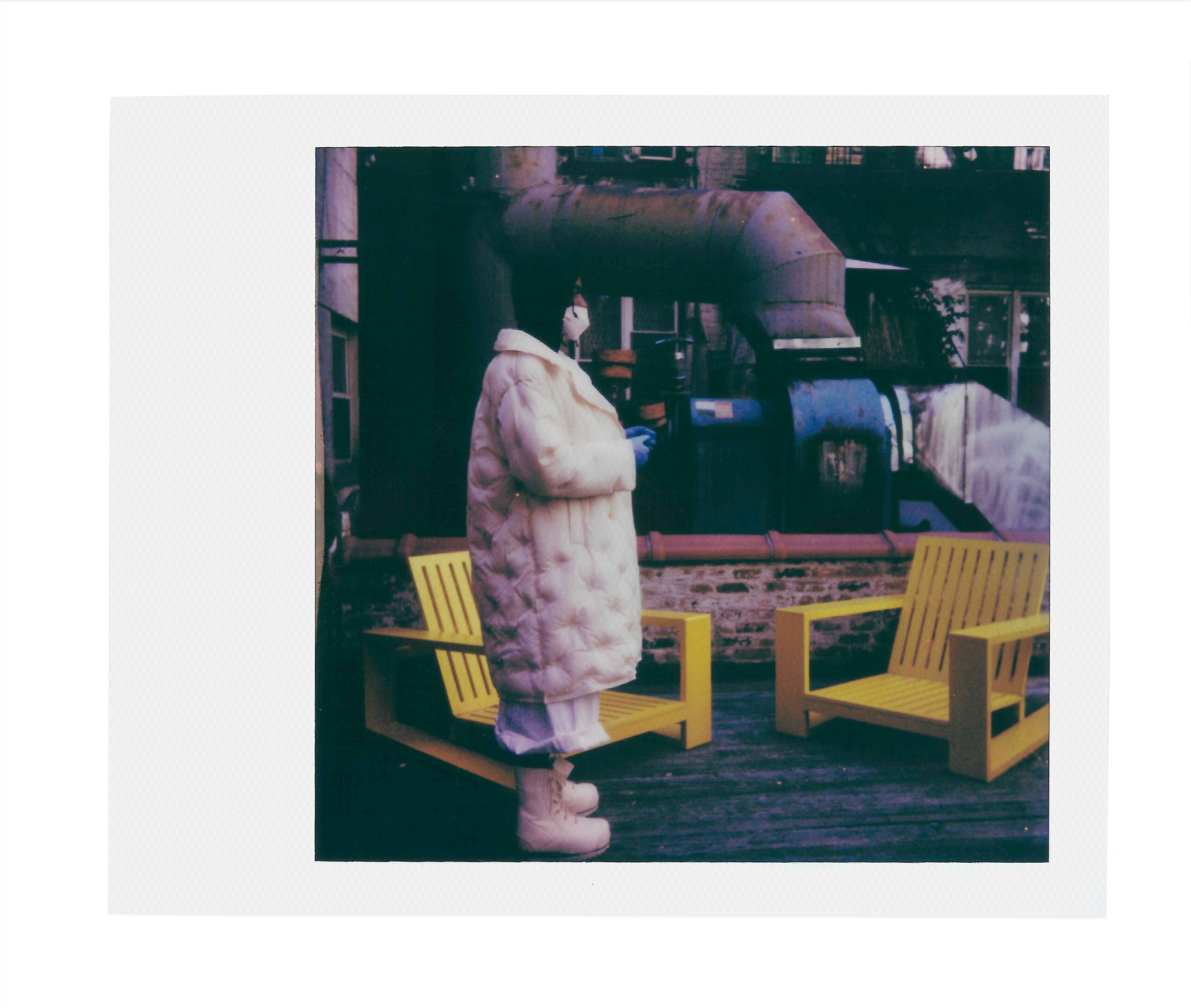
While studying at Brown University, Dominik interned with archivist David Casavant, and went on to consult for Yeezy and Helmut Lang. In joining Mo and Tsiring, he completed the trio of collectors-turned-runway-historians, whose greatest strength is their divergent tastes. “Everyone still buys what they like individually, and that’s kind of how it’s been grown,” Tsiring says of the archive that’s, for the most part, housed in Mo’s apartment. “We all have personal grails that we’ve been checking off the list over the years,” Halas adds. “I know there’s still things that I’m looking for that I’m just waiting to appear.”
When we speak via FaceTime, Dominik and Max are excited to share their recent spoils with the group – a Yohji Yamamoto shirt covered in an erotic Shunga Yuzen print, a Saint Laurent flask (“You can smuggle alcohol in style”) and a graphic T-shirt worn by Johnny Thunders of the New York Dolls that says “Elvis was a Nazi” across the front. “That kind of stuff, controversial… morbid… that’s the stuff that people want,” Max says, half-jokingly.
Hugh, Max and Dominik trade tales of chasing down garments like war stories. After all, these archival pieces are not only incredibly rare and difficult to come by, but they’re not cheap, either. Sometimes they take years to find, loads of pestering to convince their current owner to sell them, or even putting your professional life on hold for a moment. “The one piece that I was searching for was the spring 2003 Raf parachute bomber. It’s a one-of-one piece that was only made in the atelier, and it wasn’t produced, it was a sample. It’s a priceless piece – I wouldn’t even know how much it’s worth. I found out I got it in the middle of a job interview.”

Aside from expanding the collection to better cater to the fashion industry, and the thrill of chasing sought-after garments, perhaps most importantly, the founders of Artifact hope to preserve the legacy of highly influential designers through their archive. One way to stay true to this mission is simply by keeping these pieces safe and in one place, and another is by sharing their somewhat niche knowledge with others. They rent to designers that use pieces as reference materials, often sharing them with their factories or design teams, to study how innovative styles are constructed. “That’s the most fulfilling type of rental – more so than celebrity – because it’s our tastes that are really driving design in a way, or being referenced,” Halas says. “To do that from an outside independent perspective sort of democratises the design process.”
In his spare time, Dominik lectures to fashion students at Rhode Island School of Design. He almost always uses pieces from the Artifact collection as exhibits in class, to demonstrate a certain designer’s aesthetic, and examine construction details or pattern-making techniques. “That’s really important for us, that educational component of what we’re doing, because we’re so passionate about it. We want to be able to share that passion with others,” he explains, noting that they hope to partner with other schools in the future. The archive is, after all, a historical record – a snapshot of fashion design at a given time. “Coming from an art history background, I treat a lot of what we have as art,” he continues. “The preservation and education of it is so crucial to me because all of these designers’ work had such a strong impact on the formative years of my life. I almost feel like I have a duty to make sure their legacies are kept alive.” Years from now, these polaroids of Christen Mooney, dressed in archival Helmut Lang, Margiela and Raf Simons from Artifact NYC, will preserve the work of these legends in print, too.
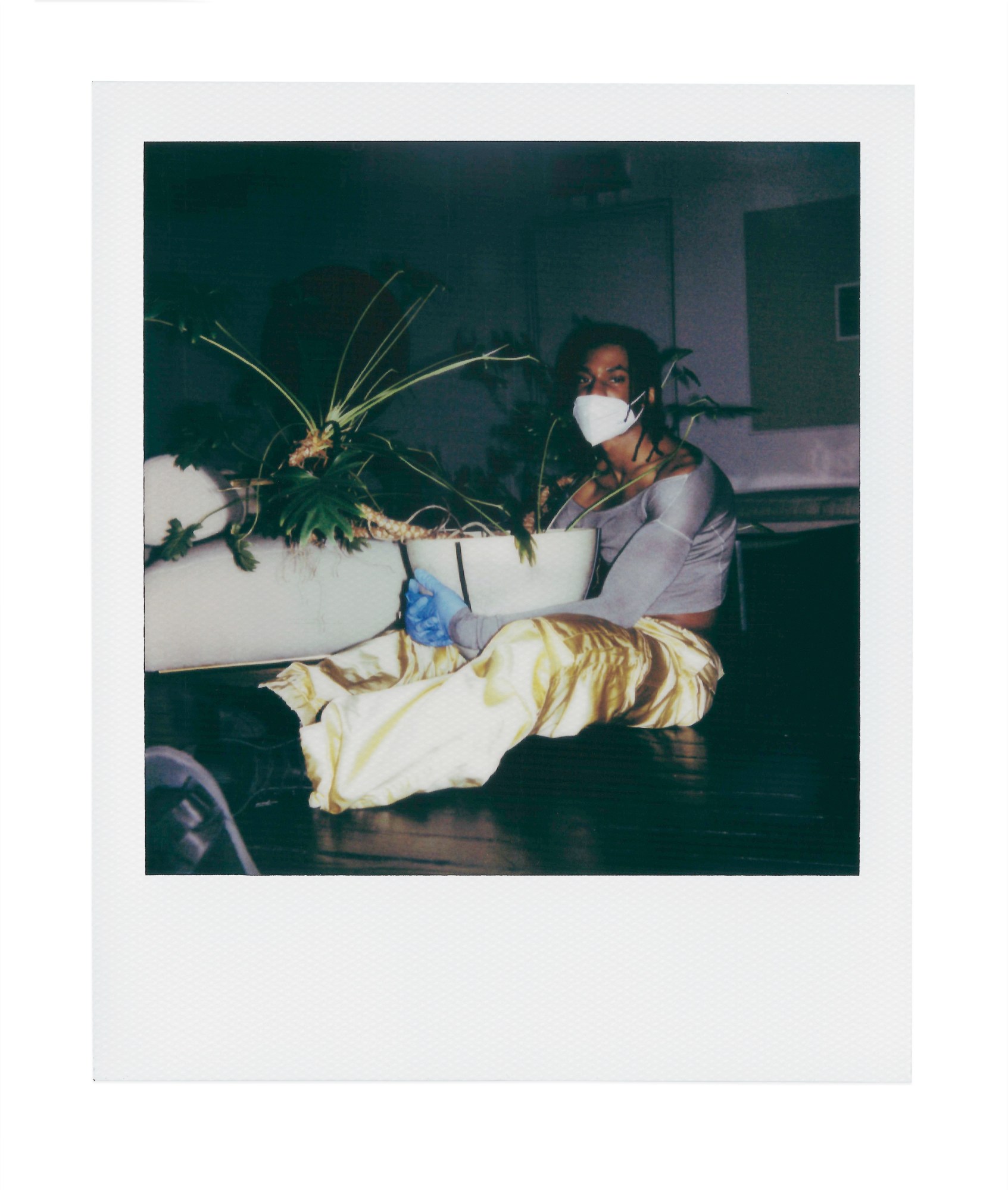
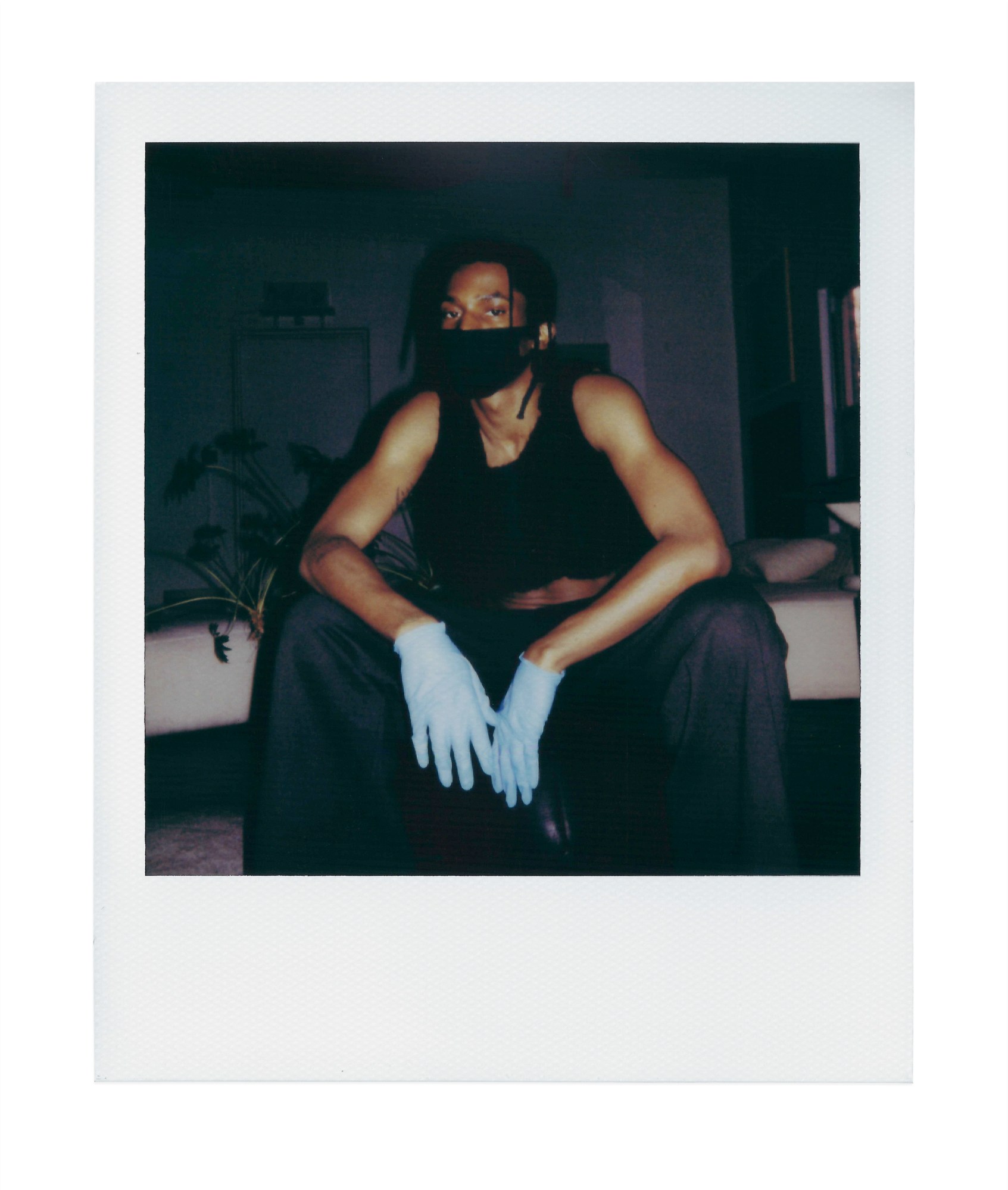
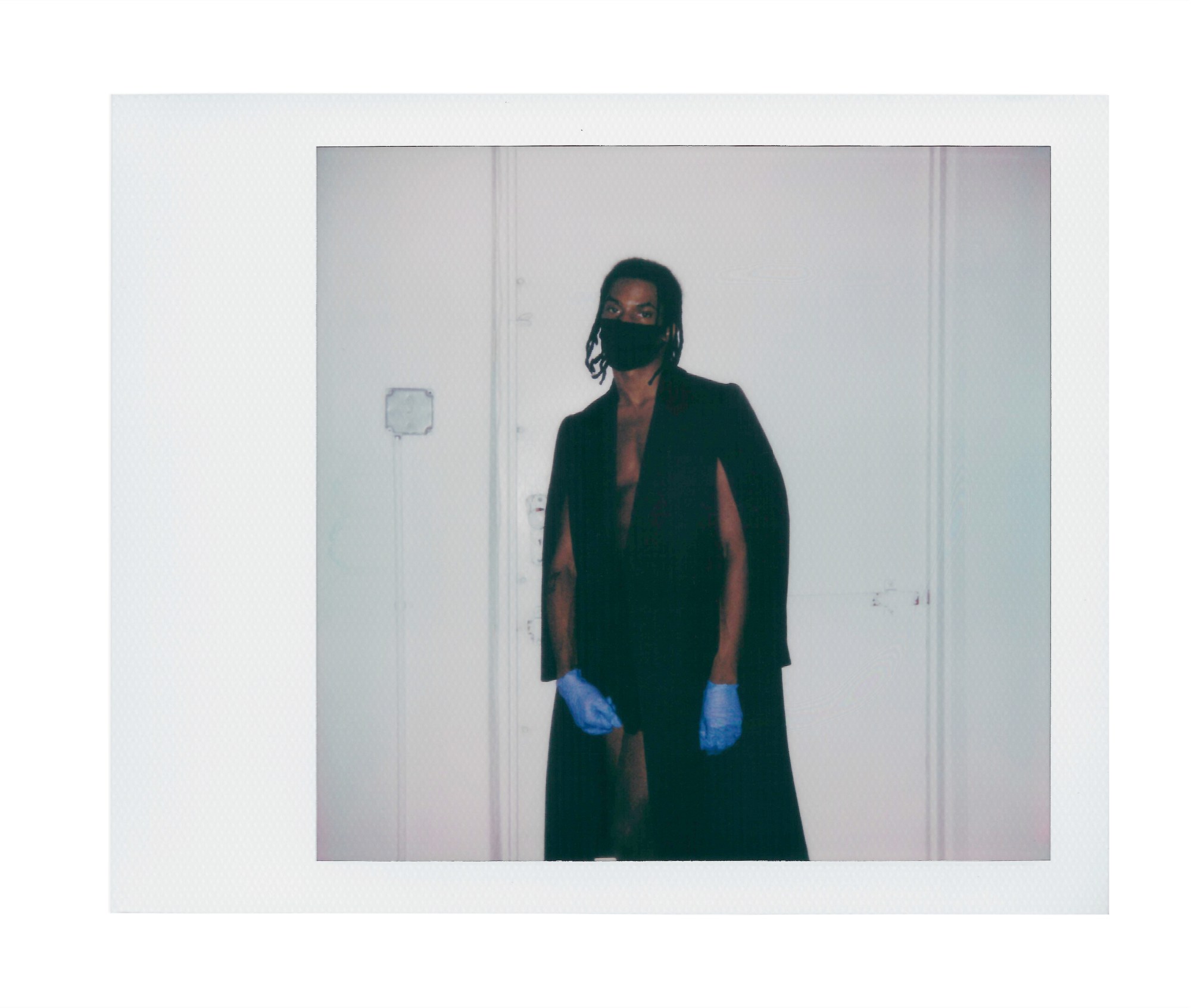
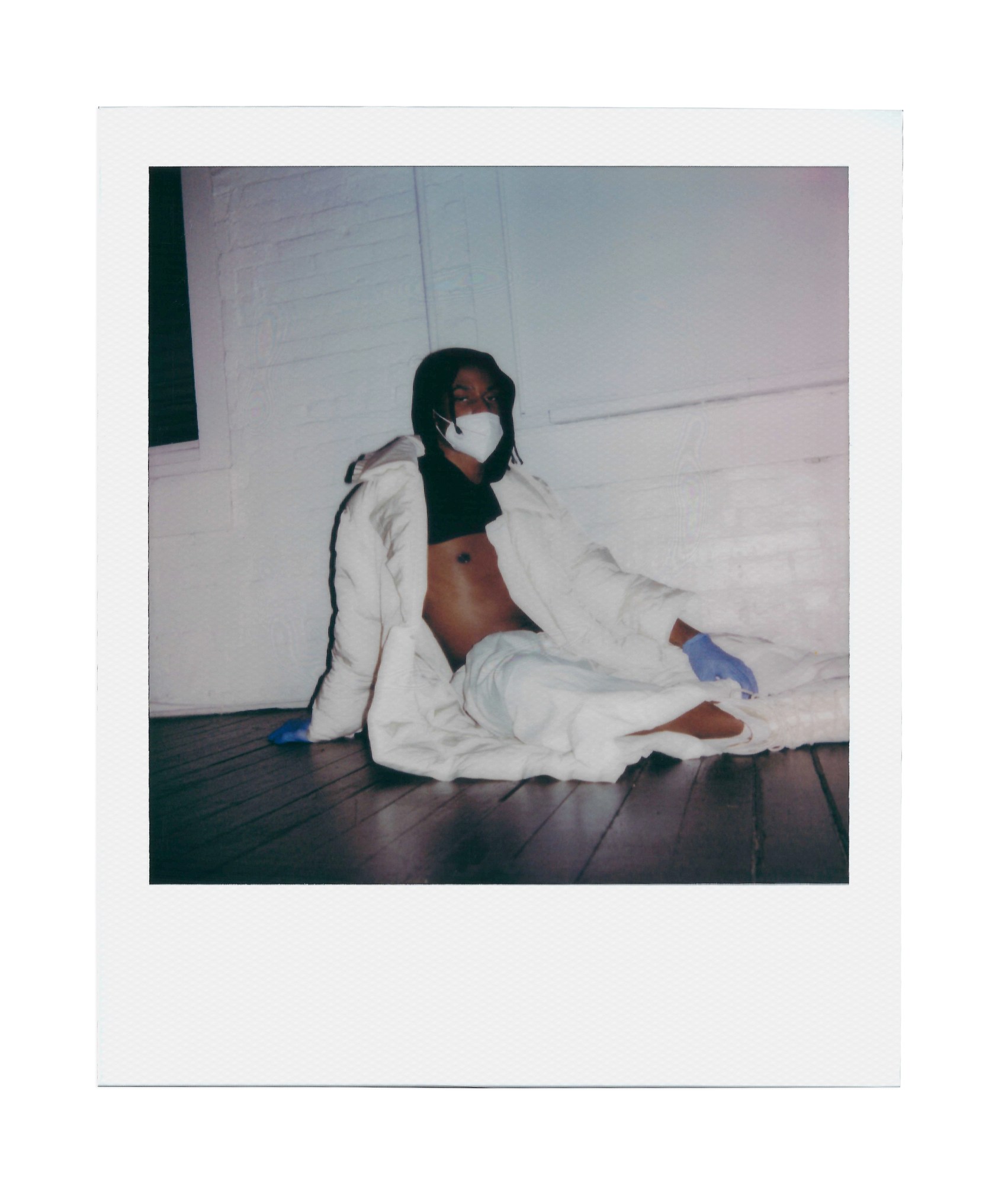
Credits
Photography and fashion director Carlos Nazario
Styling assistance Raymond Gee and Claire Tang
Model Christen Mooney
